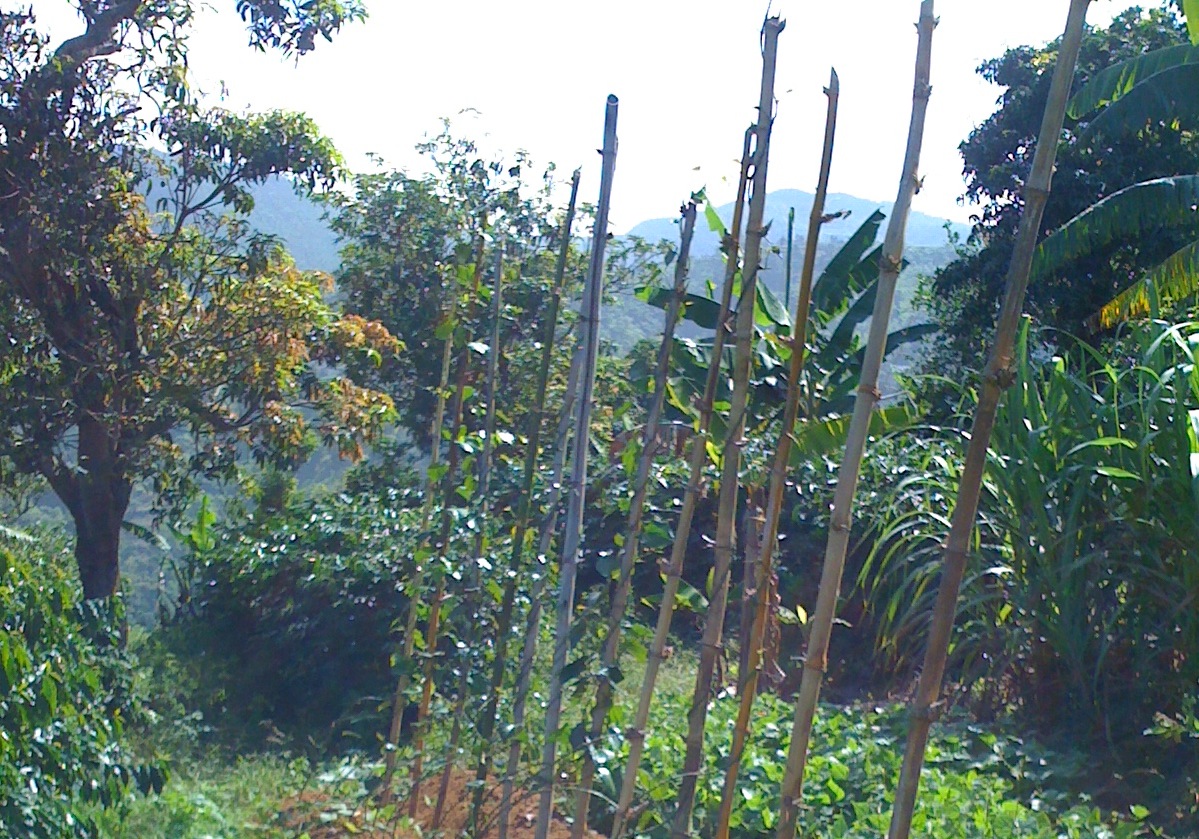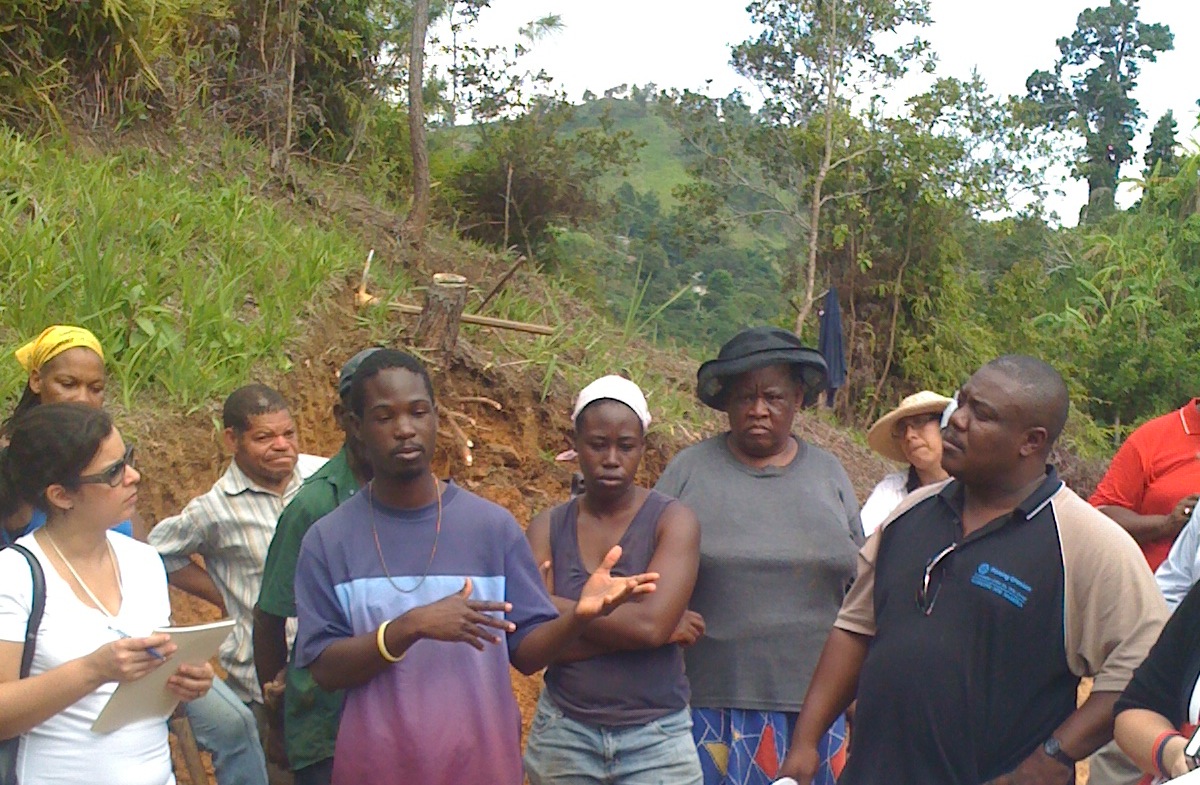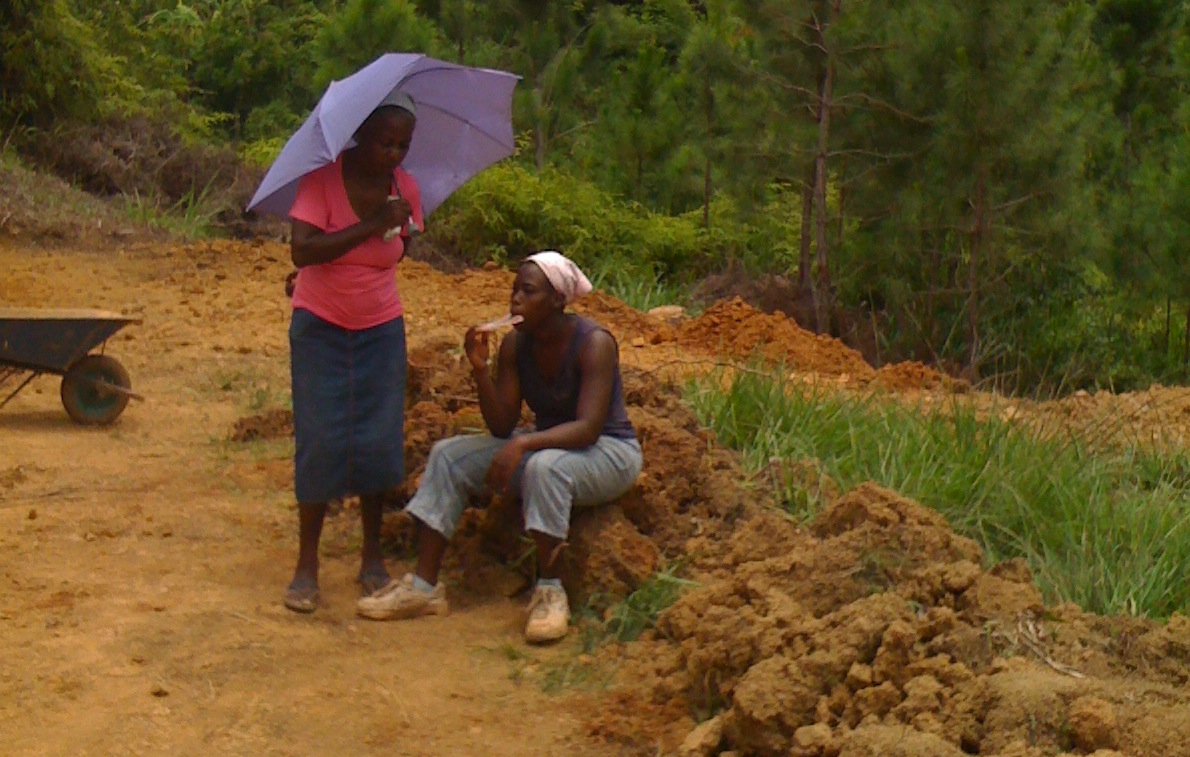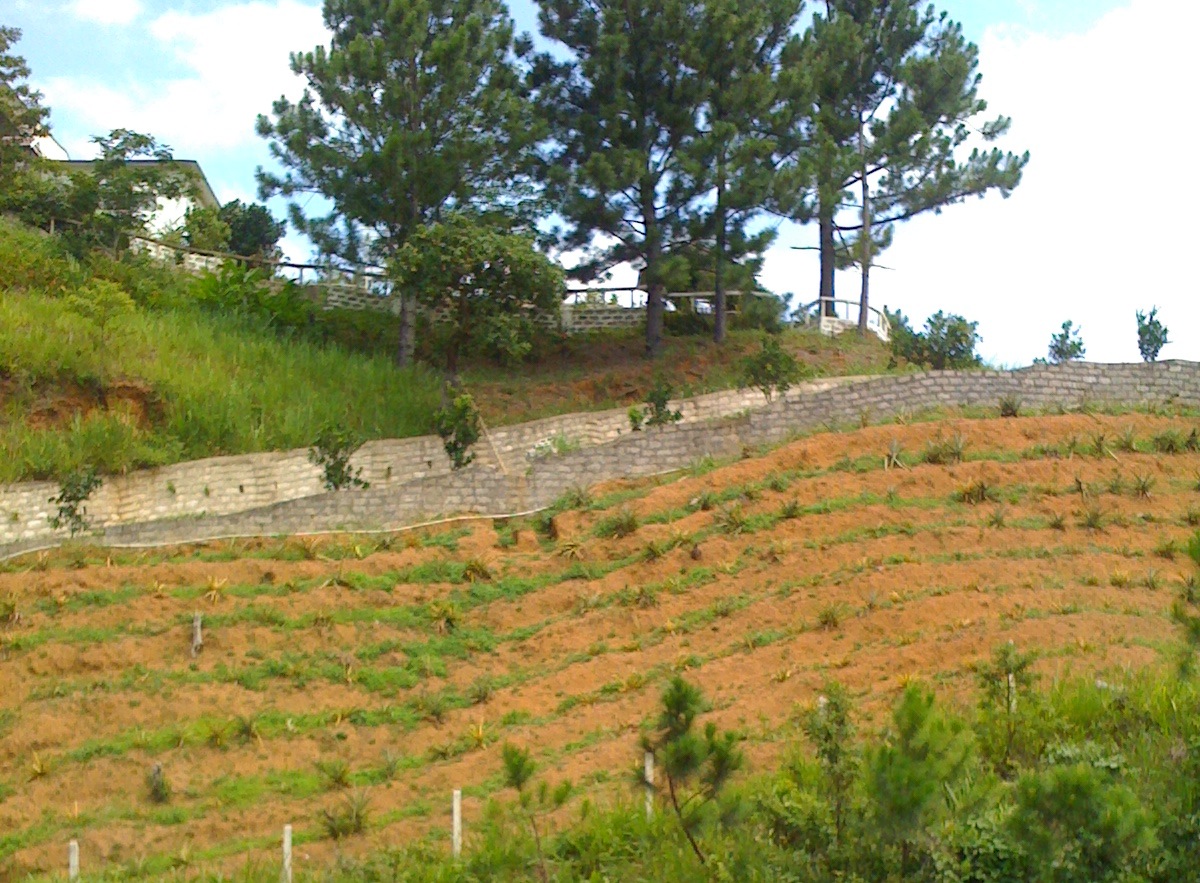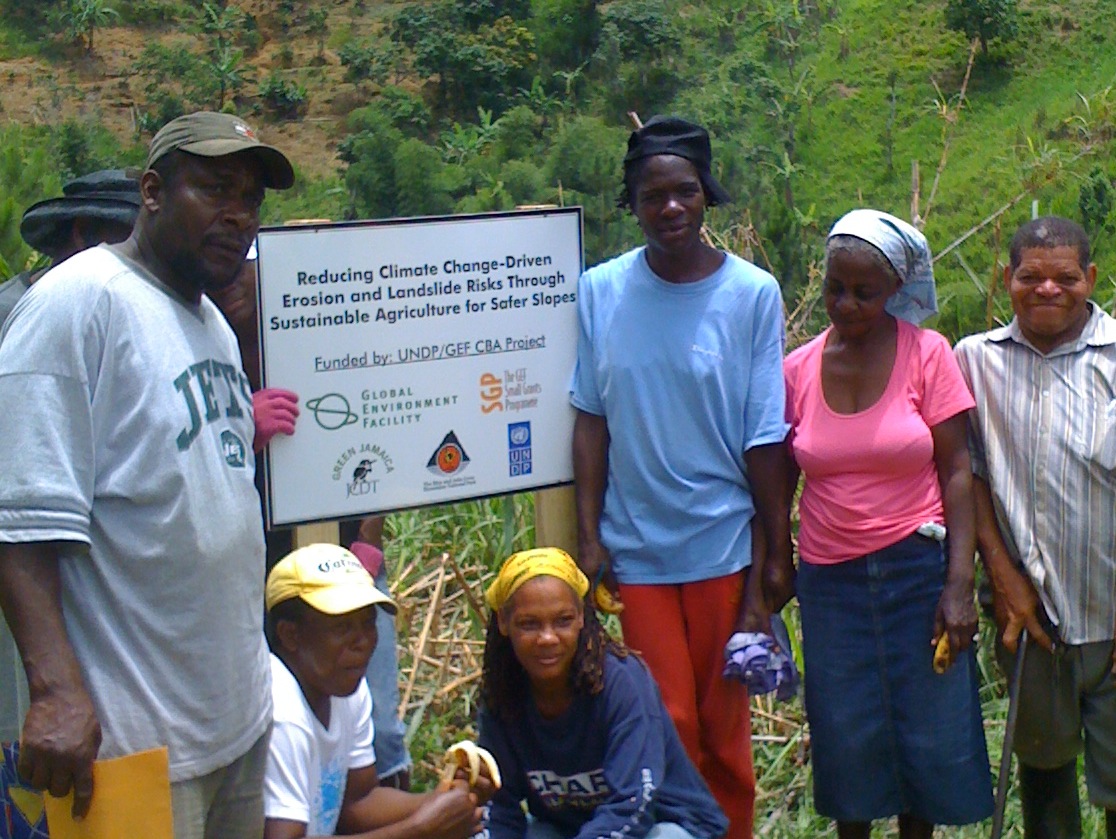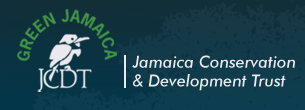CBA Jamaica: Reducing Climate Change-Driven Erosion and Landslide Risk through Sustainable Agriculture (JCDT)
Project Overview
The upper slopes of Jamaica's Blue Mountains are an important protected area, while the lower slopes are a key coffee-growing area. Climate change impacts, including stronger hurricanes and more intense drought, threaten to increase erosion and landslide risks. This places communities in danger, threatens livelihoods, and impacts a crucial watershed serving the city of Kingston. In response, this project sought to reduce climate-driven erosion and landslide risks through reforestation and agroforestry, while building the capacity of local farmers to manage ongoing climate change pressures.
By promoting more forest cover, the project also contributed to maintaining the misty and cool microclimate required for Jamaica's signature Blue Mountain Coffee, while reducing pressures that might lead farmers to migrate upslope in search of better land or more suitable microclimates for their crops.
* This project is part of Jamaica's Community-Based Adaptation portfolio. *
Project Details
Woodford (pop. 1,800) and Cascade (pop. 800) are primarily banana- and coffee-growing communities located near the Holywell Recreation Area in the Blue and John Crow Mountains National Park (BJCMNP), Jamaica. Cash crops are farmed on steep slopes, often using unsustainable agricultural practices such as slash and burn. These communities are already at risk from soil degradation, but with climate change, there is likely to be an increase in erosion and landslides. More rainfall of high intensity is expected to fall, increases in severe weather are projected, and longer and more intense periods of drought will make soils more susceptible to increasing erosion pressures. Increasing temperatures and reduced rainfall – driven by climate change and exacerbated locally by unsustainable land management practices that alter the local microclimate – are now, and are projected to continue to reduce the cool and moist microclimate that favors cool-adapted crops, particularly coffee.
Based on this threat, there is concern that climate change may lead farmers (particularly coffee farmers) to move further up the mountains seeking the cool, misty conditions that favor Blue Mountain Coffee and other crops. Agricultural encroachment is an existing pressure on the National Park, and baseline measures are not likely to be sufficient in preventing further encroachment when additional climate change pressures are taken into account. Farms already border the Blue and John Crow Mountains National Park/Forest Reserve. Any upward movement of the farms will encroach upon this protected area, which is of international significance for its biological diversity.
This Community-Based Adaptation project aimed to increase communities’ capacity to adapt their agricultural systems to climate change. Communities benefitted from more sustainable agricultural practices through improved productivity as well as reduced vulnerability to climate change impacts, particularly increased soil erosion. Best practices were highlighted for replication in surrounding communities, nationally, and through global adaptation knowledge platforms. Project activities included training, technical assistance on farms, implementation of pilot projects, reforestation and planting of trees on farms.
Key Results and Outputs
Outcome 1: Increased capacity for applying soil conservation techniques in steep slope environments
Training (Output 1.1) and demonstration projects (Output 1.2) in cost-effective soil conservation methods.
Outcome 2: Alternative livelihood practices promoted
Demonstration projects in greenhouse farming (Output 2.1) and training in organic farming for higher-value produce (Output 2.2).
Outcome 3: Forest and tree cover promoted on vulnerable slopes
Tree planting on degraded land within and outside Park (Output 3.1). Farmers practicing agro-forestry (Output 3.2).
Reports and Publications
Case Study
News article
CBA Jamaica - Poster Competition - Press Release (Feb. 2012)
Assessments and Background Documents
PIFs
Project Brief / Fact Sheet
Monitoring and Evaluation
Monitoring and evaluation for community-based adaptation is a new field, and the CBA project is piloting innovative approaches to evaluating the success of locally-driven adaptation projects, and generating lessons to inform ongoing practice.
Key considerations in M&E for CBA include:
- Grounding M&E in the local context: M&E for CBA should avoid overly rigid frameworks, recognizing community heterogeneity and maintaining local relevance
- Capturing global lessons from local projects: CBA projects are highly contextualized, but lessons generated should be relevant to stakeholders globally
- Incorporation of both quantitative and qualitative indicators: to ground projects in tangible changes that can be objectively evaluated, and to capture lessons and case studies for global dissemination
To these ends, the CBA project uses three indicator systems: the Vulnerability Reduction Assessment, the Small Grants Programme Impact Assessment System, and the UNDP Climate Change Adaptation Indicator Framework.
The Vulnerability Reduction Assessment (VRA)
The VRA is a question-based approach with the following aims:
- To make M&E responsive to community priorities
- To use M&E to make projects more accountable to local priorities
- To make M&E capture community ideas and local knowledge
- To gather community-level feedback to guide ongoing project management
- To generate qualitative information
- To capture lessons on specific issues within community-based adaptation
- To generate case studies highlighting adaptation projects
The VRA follows UNDP's Adaptation Policy Framework, and is measured in a series of meetings with local community stakeholders. In these meetings, locally-tailored questions based on standard VRA questions/indicators are posed, and the community assigns a numerical score on a 1-10 scale for each question. Progress is evaluated through changes in scores over the course of implementation, as well as through qualitative data collected in community discussions surrounding the exercise.
UNDP has developed a Users Guide to the VRA (Espanol) (Francais) as a tool to assist practitioners to conceptualize and execute VRA measurements in the context of CBA projects.
The SGP Impact Assessment System (IAS)
The CBA, being a project of the GEF Strategic Priority on Adaptation, aims to increase the resilience of ecosystems and communities to the impacts of climate change, generating global environmental benefits, and increasing their resilience in the face of climate change impacts. To this end, the CBA projects use the SGP's impact assessment system for monitoring achievements in GEF focal areas (focusing primarily on biodiversity and sustainable land management).
The IAS is composed of a number of quantitative indicators which track biophysical ecosystem indicators, as well as policy impact, capacity development and awareness-building.
UNDP Climate Change Adaptation Indicator Framework
CBA projects also track quantitative indicators from UNDP's adaptation indicator framework, corresponding to the thematic area on natural resources management. More information on UNDP's indicator framework can be found on the UNDP climate change adaptation monitoring and evaluation website.
* This description applies to all projects implemented through UNDP's Community-Based Adaptation programme. Specific details on this project's M&E will be included here as they become available. *
